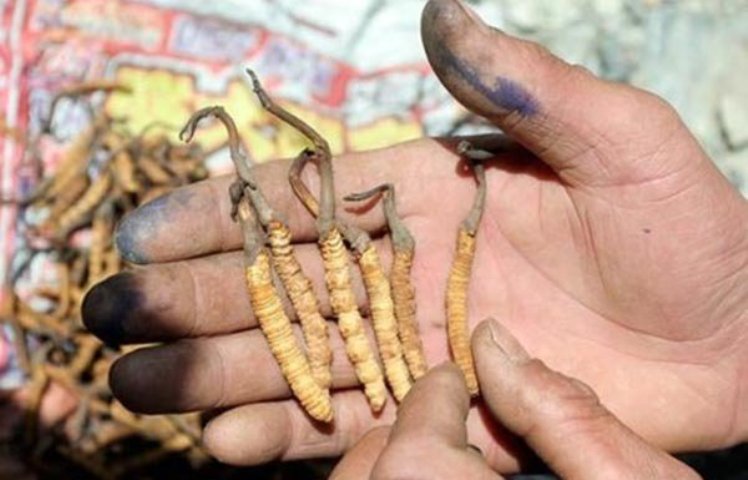Climate change posing threat to 'Himalayan Viagra': Study
As one of the world’s most expensive biological commodities, caterpillar fungus has become a primary source of income for hundreds of thousands of collectors, Hopping said.

A parasitic fungus that is more valuable than gold, and is nicknamed "Himalayan Viagra" due to its demand as an impotence cure, could vanish if current harvesting and climate trends continue, according to a study using data from four countries, including India.
The fungus, Ophiocordyceps sinensis, survives by preying on ghost moth caterpillars in some of the highest reaches of the Himalayas, said researchers from the Stanford University in the US.
The fungus infects and eats the insides of a caterpillar that burrows underground for winter, said Kelly Hopping, who conducted the research as a postdoctoral scholar at Stanford.
Beginning in the 1990s, demand for the fungus as an aphrodisiac, impotence cure and remedy for the deadly SARS virus -- while unsupported by scientific evidence -- helped to jumpstart a global trade, researchers said.
Since then, belief in a wide range of healthful effects from the fungus has fuelled a market valued at some USD 11 billion, as well as concern that harvesting rates have become unsustainable, they said.
The study, published in the journal Proceedings of the National Academy of Sciences, presents the most comprehensive data to date addressing whether and why caterpillar fungus production might be on the decline. and the likely consequences of a possible crash for the communities that depend on the fungus for their livelihood.
As one of the world’s most expensive biological commodities, caterpillar fungus has become a primary source of income for hundreds of thousands of collectors, Hopping said.
Widely known in Tibet as yartsa gunbu, or "summer grass, winter worm," caterpillar fungus has been used in traditional medicine throughout the Himalayan region and in China for centuries to treat ailments ranging from cancer and kidney disease to inflammation and ageing.
In more recent years it has earned the nicknames "Himalayan Viagra" and "Himalayan gold," researchers said.
To get around the problem of patchy trade data for the valuable fungus, the team turned to collectors' own knowledge of production trends in China, Bhutan, Nepal and India, as reported in dozens of case studies.
The researchers then bolstered the published accounts by interviewing 49 collectors across the Tibetan Plateau.
With this data and 400 records of where the fungus has been found throughout the four countries since the 1970s, the group built models predicting how much fungus would grow in a given area based on factors like climate and elevation.
The results show the fungus tends to be more prolific in higher, colder areas around the margins of areas underlain by permafrost.
Currently, caterpillar fungus is sufficiently abundant in springtime in prime production areas that many people can collect enough in a month or two to support themselves for the rest of the year, researchers said.
However, production is already on the decline due to intensive harvesting -- and warming winters may be exacerbating that trend, they said.
In a region where average winter temperatures in some places have already increased by as much as four degrees Celsius since 1979, the researchers found that every degree of winter warming makes it harder for the fungus to thrive.
As permafrost disappears from lower elevations, the fungus can adapt by shifting to colder upslope habitats only if its caterpillar hosts -- and the vegetation and seasonal patterns on which they depend -- shift upward, too.
In the long term, if income from caterpillar fungus can be sustained, the study suggests, it could provide an important financial cushion for those whose livelihoods herding livestock on high-altitude grasslands face mounting threats from climate change.
"Caterpillar fungus collection has emerged as a way for people in these areas to make relatively easy money," Hopping said, "and in some cases to really raise their standard of living."
However, if demand continues to grow as supplies decrease, it could aggravate tensions over who has access to harvesting areas, Hopping said.
"Communities in areas where it is still growing will need to remain vigilant about potential conflicts and poaching as people seek to harvest this increasingly rare and valuable species," Hopping said.
(With inputs from agencies.)










